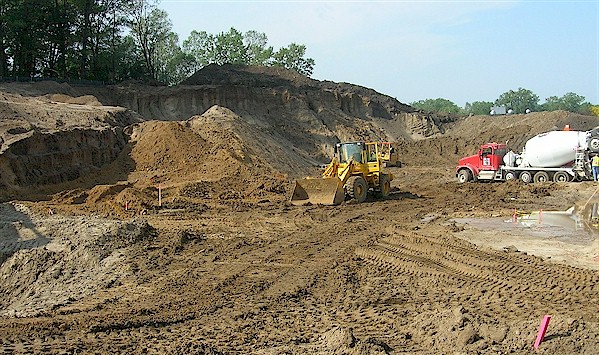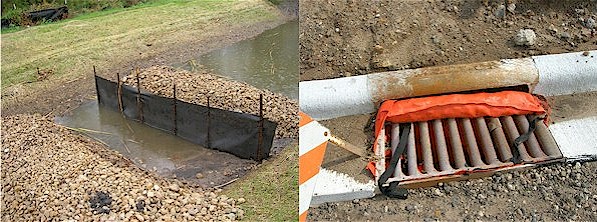Ramsey County services are not impacted by the Federal shutdown at this time.
Erosion Control
When stormwater drains off a construction site, it carries sediment and other pollutants that harm lakes, streams and wetlands. According to the 1996 National Water Quality Inventory, stormwater runoff is a leading source of water pollution. The U.S. Environmental Protection Agency (EPA) estimates that 20 to 150 tons of soil per acre is lost every year to stormwater runoff from construction sites.

Exposed soils on a construction site
Many studies indicate that controlling erosion can significantly reduce the amount of sedimentation and other pollutants transported by runoff from construction sites. To keep Minnesota’s valuable water resources clean, the Minnesota Pollution Control Agency (MPCA) issues permits to construction site owners and their operators to prevent stormwater pollution during and after construction.
Site owners and their construction operators must sign off on a National Pollutant Discharge Elimination System (NPDES) permit. As part of the application for this legal document, the owner and operator must create a stormwater pollution prevention plan (SWPPP) that explains how they will control stormwater, in addition to implementing Best Management Practices (BMPs) on their sites, to prevent sediment from escaping.

From left to right: A ditch check used to filter water, inlet protection blocking sediment